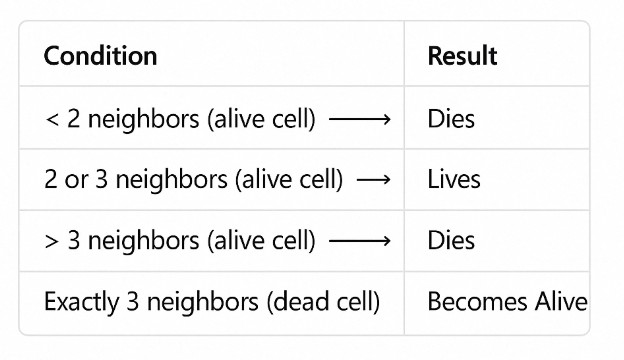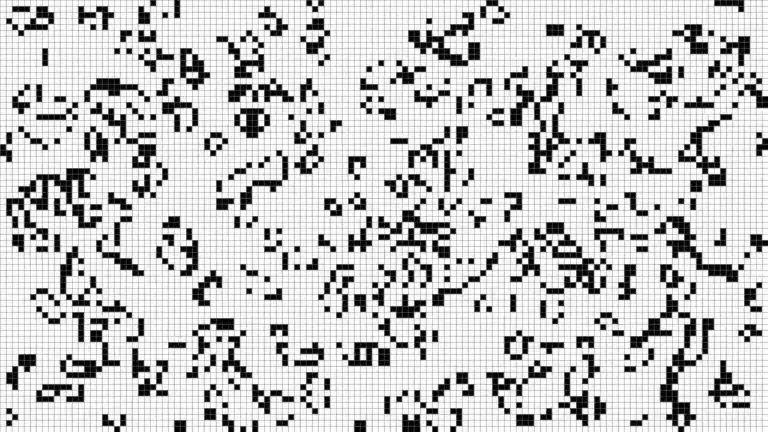

Conway’s Game of Life Rules
🧩 Basic Setup
- The simulation runs on a grid of square cells.
- Each cell can be in one of two states:
- Alive (filled square)
- Dead (empty square)
- Alive (filled square)
- The grid evolves in steps (called generations).
- Each cell looks at its 8 neighbors (horizontal, vertical, diagonal) to decide its next state.
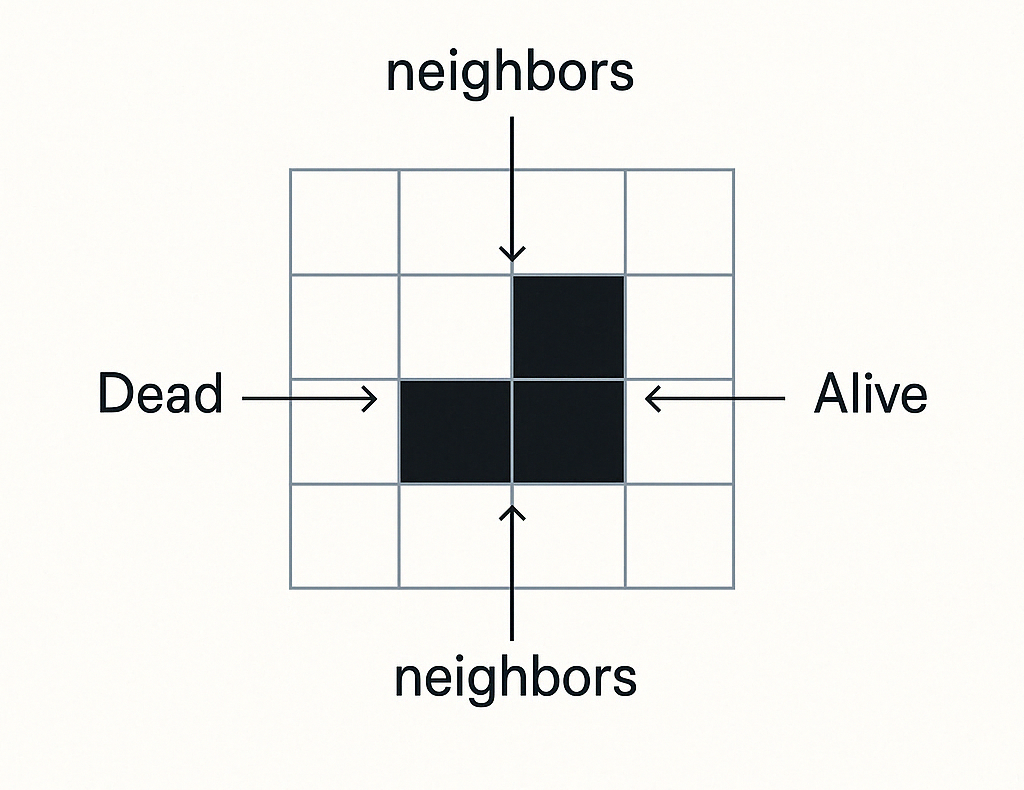
📜 Rules (applied to each cell, every generation)
1. Underpopulation
If a living cell has fewer than 2 living neighbors → it dies.
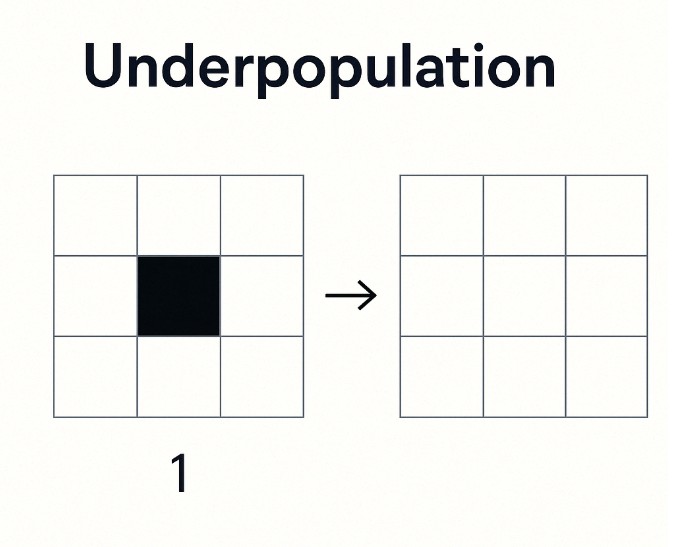
2. Survival
If a living cell has 2 or 3 living neighbors → it stays alive.

3. Overpopulation
If a living cell has more than 3 living neighbors → it dies.

4. Reproduction
If a dead cell has exactly 3 living neighbors → it becomes alive.

🔁 How a Generation Works
- Count the alive neighbors for each cell.
- Apply the 4 rules above.
- Update all cells simultaneously (no in-between states).
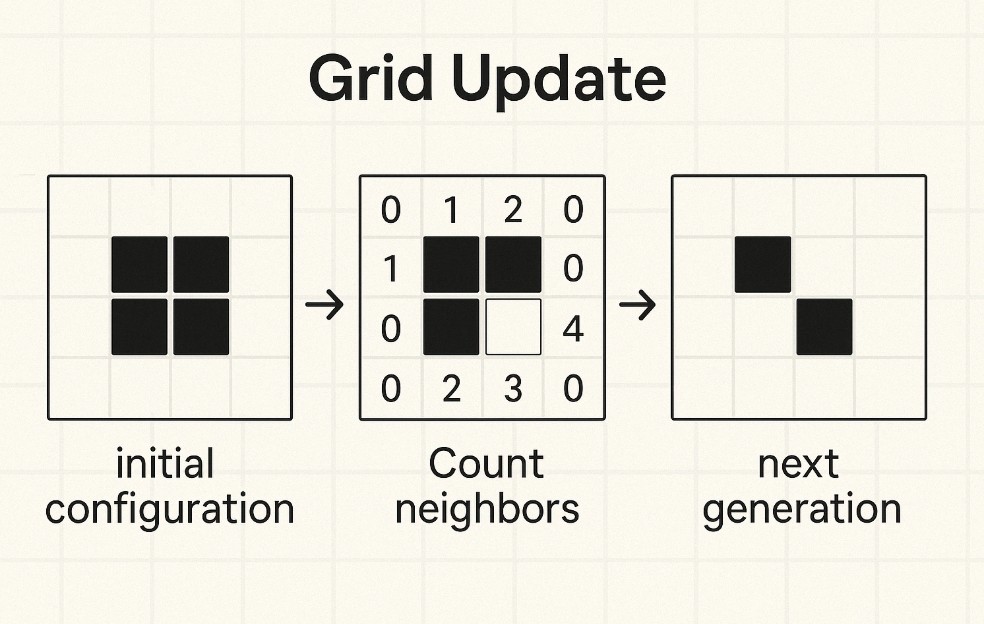
🎯 Notes
- The rules are deterministic — same input always gives same output.
- The game has no user interaction during runtime — set the start, then watch.
- A small initial pattern can lead to stable, oscillating, or expanding behavior.
🧠 Extra Concepts (Optional)
🔁 Still Lifes
Patterns that do not change over time.
Example: Block, Beehive.
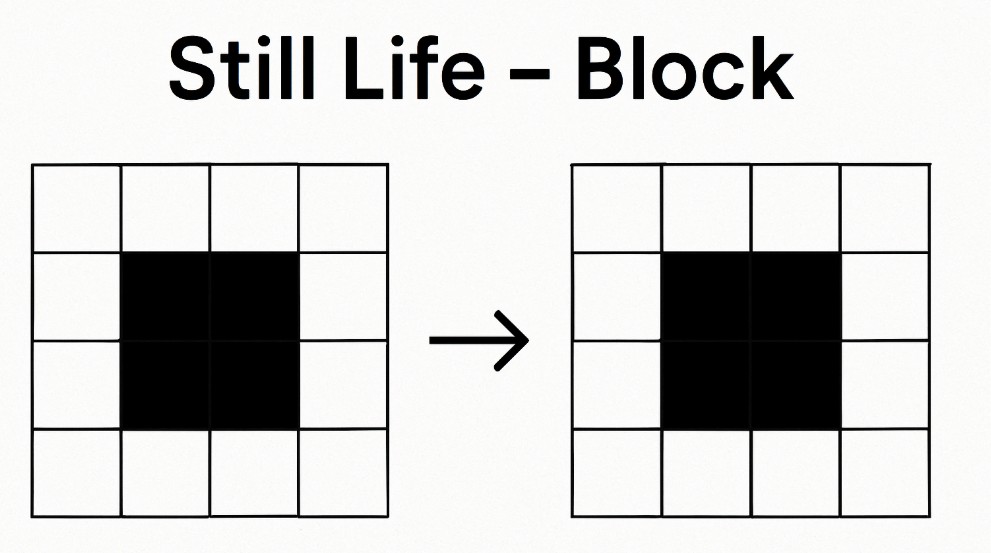
⏳ Oscillators
Patterns that repeat every N generations.
Example: Blinker (N = 2), Toad (N = 2), Pulsar (N = 3)
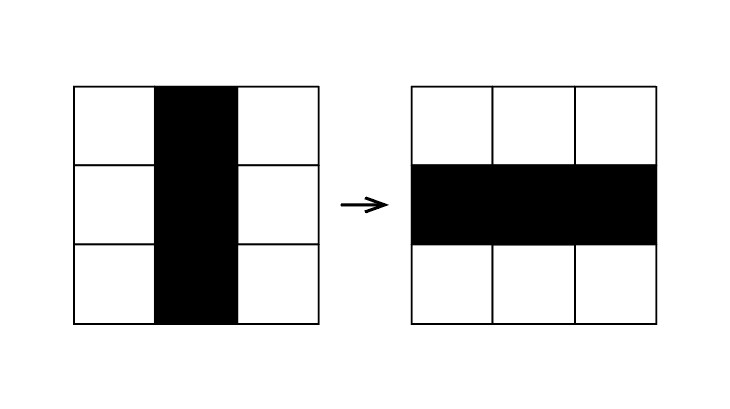
🚀 Spaceships
Patterns that move across the grid over time.
Example: Glider, Lightweight Spaceship
✅ Summary (Quick Reference)
